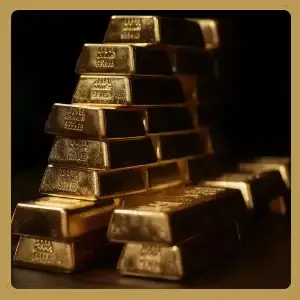Precious metals have played a significant role in human history, serving as a form of currency, a symbol of wealth, and a store of value. Let’s take a journey through the history of precious metals, their uses, and their relevance in modern times, including investing in them.
Ancient Times:
Precious metals have been used by ancient civilizations for thousands of years. The earliest evidence of metalworking and the use of precious metals can be traced back to ancient civilizations like the Egyptians, Greeks, and Romans. Gold, silver, platinum, and other metals were used to create coins, jewelry, and religious artifacts. They were often considered a sign of power, prestige, and divinity.
Precious Metals as Currency:
As civilizations evolved, precious metals became a standard form of currency. For example, the Gold Stater coins in Lydia (present-day Turkey) were among the first metal coins used for trade around the 6th century BCE. Gold and silver coins continued to be used as currency in various cultures for centuries.
Industrial Revolution and Beyond:
With the advent of the Industrial Revolution in the 18th and 19th centuries, the uses of precious metals expanded beyond currency and adornment. Platinum, for instance, gained importance in catalytic converters and various industrial processes.
Modern Uses:
Today, precious metals have a wide range of applications in various industries, including electronics, medicine, dentistry, and more. They remain highly sought after for their scarcity, conductivity, and resistance to corrosion.
Investing in Precious Metals Today:
Investing in precious metals is a popular option for individuals seeking to diversify their investment portfolios and hedge against economic uncertainties. Investors often purchase precious metals in various forms, including bullion bars, coins, and Exchange-Traded Funds (ETFs) that track the metal’s value.The most common precious metals used for investment purposes are:Gold: Known as a “safe haven” asset, gold is considered a store of value and is often sought during economic downturns or times of geopolitical instability.
Silver: Silver is not only valued for its monetary uses but also has industrial applications, making it sensitive to economic cycles.Platinum and Palladium: These metals are essential in the automotive industry due to their use in catalytic converters. As a result, their prices can be influenced by changes in the automotive sector.Precious Metal ETFs: Investing in precious metal ETFs allows individuals to gain exposure to the price movements of precious metals without holding physical metal.References:“A History of Gold.” World Gold Council. https://www.gold.org/goldhub/history-gold
“Precious Metals: A Cultural History.” Financial Times. https://www.ft.com/content/cf3783d8-38b6-11e7-821a-6027b8a20f23
“A Brief History of Precious Metals.” JM Bullion. https://www.jmbullion.com/guides/precious-metals-history/
“Why Do People Buy Gold?” The Balance. https://www.thebalance.com/why-do-people-buy-gold-808549
“A Brief History of Silver.” APMEX. https://www.apmex.com/education/history/history-of-silver
Please note that the value of precious metals can be volatile, and before investing in them, it’s essential to conduct thorough research and consult with financial professionals to align your investment strategy with your financial goals and risk tolerance. 

